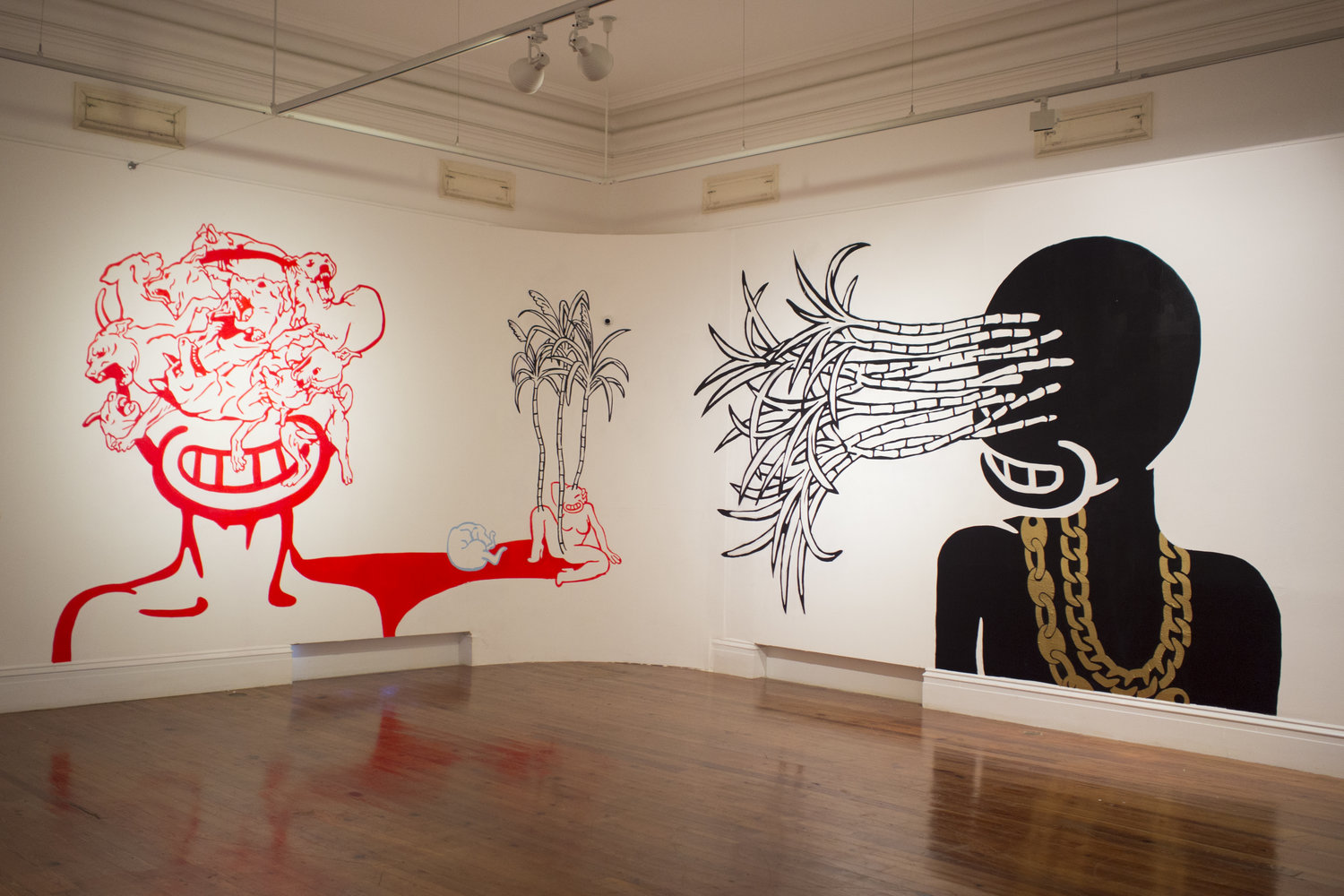
By Dr Ian Bethell-Bennett.
As The Bahamas moves into a new administration, 50 years of Majority Rule and over 40 years of independence have done little to remove the boundaries around free expression and positive self-imaging. Basking in its Victorian properness, as long as it is useful, the tourist destination boasts a particular image of Caribbeanness that is acceptable and palatable to the population because they have been taught to accept it.
It is an image that is tightly controlled by a past deeply anchored in gender and racial inequalities, but also deeply depoliticised by the spread of the post-colonial ethos that assumes that everything colonial has been deconstructed and replaced by empowering images of women and men. This has not, though, been the case.
In “Silencing the Subaltern,” a translation of Jacques Derrida’s “Of Grammatology,” by Gayatri Spivak’s–an Indian scholar bought into the spotlight by the rise of postcolonialism–Spivak works to unsilence the subjected subaltern, in this case, she refers to women but in the present context it can be construed as anything to do with being disempowered or silenced by the authority of history, law and systemic controls imposed by colonialism.
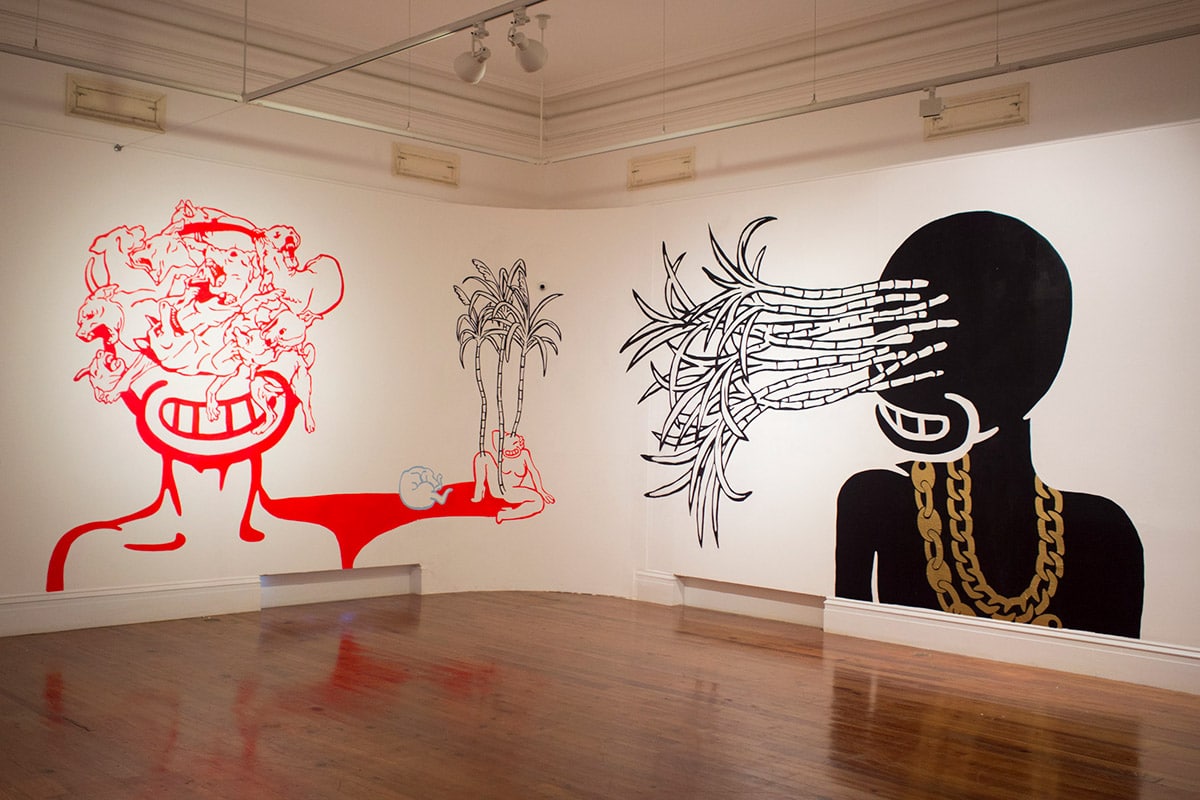
Install shot of Leasho Johnson’s installation “Playing the Fields” as a part of Double Dutch, “Of Skin and Sand” on view through September 24th at the NAGB.
Art has been famously constrained by Victorian mores and, to be sure, women were disempowered by law and morality and so could not even speak for themselves. Worse, all colonial subjects were also silenced and rendered objects of pleasure or labour by the same colonial laws. What began to change in art practices was the insistence on being heard or at least speaking out.
A few recent works presented in exhibitions have deconstructed the powerful mechanisms of disapproval, silencing and shaming. These works challenge the power of the speaker to own their voice, their body, not to mention their image. Again, Gabrielle Banks, Sue Katz Lightbourn, Giovanna Swaby, April Bey and others all work with female bodies and body image. Some go further than others in throwing off the mantle of silence and shame imposed on the body and mind by patriarchal systems of control. Edrin Symonette and Leasho Johnson’s endeavour in the current Double Dutch “Of Skin and Sand,” begin to untangle male sexual silence and shaming from the hands of acceptable representation.
What must be considered is the controlled image of sexuality and nudity and the implicit or tacit work politicians do to re-impose the veil of social acceptance of refined femininity, utterly desexualized acceptable womanhood, and respectable masculinity. All of these ideas fly in the face of the image of deeply sexualised bodies lying prostrate on beaches that tourism uses to sell its product. In a few words, we can only be sexualised by an external source, so the discussion around male and female body image in this sociocultural context is deeply troubled and troubling.
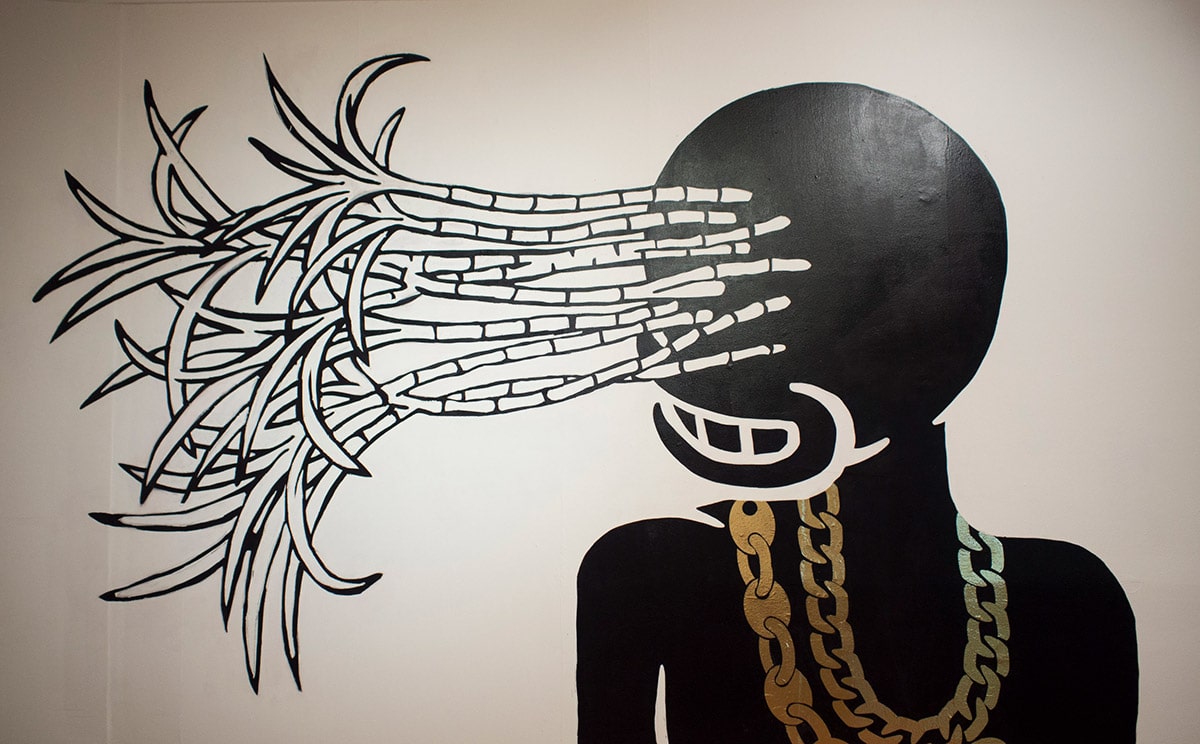
Install shot of Leasho Johnson’s installation “Playing the Fields” as a part of Double Dutch, “Of Skin and Sand” on view through September 24th at the NAGB.
Sexism and colonialism, much like fascism and dictatorship, were meant to have been ended by the liberatory discourse and actions of the World War II and its aftermath. In the immediate wake of the war, many societies attempted to roll back a great many of the gains made through the dismantling of fascism. For example, women were then moved to the workplace to be employed to fill in for the men who had been sent to fight. By the middle of the 1950s, there was a great push to get women back in the home and to re-establish order as it had been ‘known’ before the outbreak of the WWII. This was met with a great deal of resistance as the feminist movement, and other egalitarian energies, began to push back against renormalizing old tropes and images and for the recognition of women’s rights.
This was a particularly important period for the postmodern school of thought that moved beyond the structures of Modernism. Interestingly, science also made great advances, and so understandings of ‘normal’ laws that foresaw people as unequal through science were undone, for the most part. Two extremely important postmodernist thinkers who worked to undo many binaries were Michel Foucault and Jacques Derrida. Their work could be said to align with science and its revelations that people were more equal than not, but also the shift towards a humanistic understanding of power imbalances and socio-cultural constraints placed on the imagination and human bodies.
Once there is no longer a colonial master, there should no longer be a colonial system, and thus colonialism has been ended by post-colonialism and the independence of the once subject states. Unfortunately, deconstruction offers nothing to replace the system that has been shown to be exploitative. The image-creating system of tourism, representation and marketing render us still silent about who we are as people and even more so as individuals. We are taught to be deeply ashamed of our bodies, except when they are used to promote commercial development. So, sexuality is not for regular discussion and certainly not for us to display or to see as empowering to us.
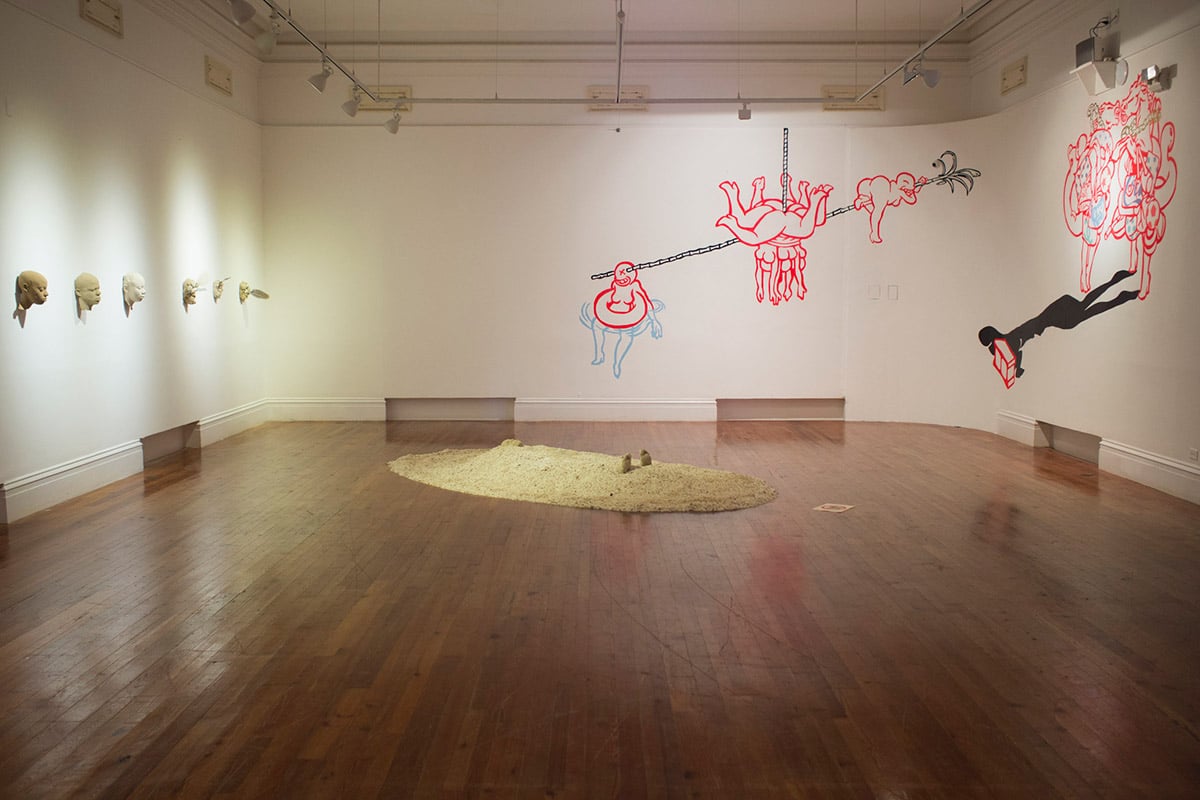
Install shot of Edrin Symonette’s “Island Life: The Ballad of Deangelo Johnson for Quakoo Street” as a part of Double Dutch, “Of Skin and Sand” on view through September 24th at the NAGB.
This understanding makes these artworks so important to the discussion around accepting who we are as people and as individuals. They take on the boundary breaking that Foucault and Derrida begin, but they arguably go a little further by showing that our bodies are an intimate and sacred part of us and who we are. We must make aware the power of patriarchal, misogynistic and masculinist control over body image and acceptance. For example, few girls and boys are allowed to be comfortable with their bodies from what they are taught or the discussion at home or in school, if discussions are had. In fact, they are taught that their bodies are bad and must be ignored. What is more, their sexuality is also ignored; we refuse to acknowledge that they are sexual beings until they have had babies or have to deal with some disease passed on by their inability to discuss their identities and the refusal to talk about sex, sexuality, nudity and even femininity and masculinity.
Often, religion imposes conservative dogma on the understanding of the human body that renders it nothing more than dirty and unacceptable. Yet, the image of a deeply sexualised Caribbean is sold around the world. Furthermore, many religions or churches refuse to allow even a discussion around puberty or menstruation that would promote an understanding of how our humanity, made by the creator, works. It is only ever said to be dirty. So, men in charge can use the bodies for their protection as they feel so inclined; this includes sexual violence, incest and paedophilia, which according to some, are sins of the developed world.
How does this work? We are a paradise constructed to be consumed by the West, as Mimi Sheller offers. It is also significant to note that by imposing silence on sexualised subjects, especially children and young people, we disempower them, we refuse to hear their stories of sexual violence, rape and incest that are far too common in this space. By refusing to give youth the language to discuss exploitation and sexploitation that would empower, as demonstrated by Focus on Youth Caribbean, a longitudinal study undertaken in The Bahamas with high school students, we allow them to be exploited. If one cannot speak of one’s suffering, it does not exist, according to the political will. These sorts of artistic initiatives can create holistic partnerships with academic teaching and community-based educational work.
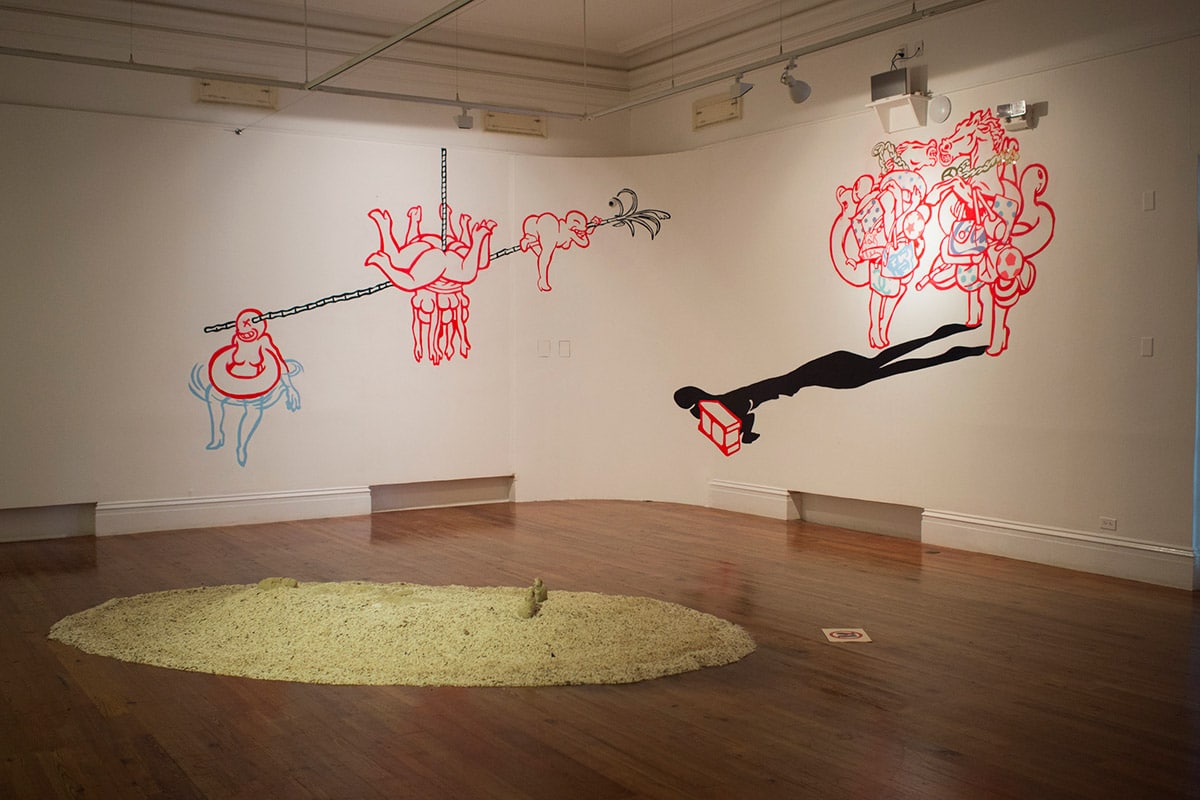
Install shot of Edrin Symonette’s “Island Life: The Ballad of Deangelo Johnson for Quakoo Street” as a part of Double Dutch, “Of Skin and Sand” on view through September 24th at the NAGB.
Culturally, The Bahamas has an incredibly high rate of sexual violence and incest, not to mention violence against women, as well as gender based violence; the messages that could be deployed by these works is a positive and ‘uplifting’ image to empower youth. The installations created by Johnson and Symonette, although only the beginning of a discussion, can serve as a springboard into more positive self-imaging for both males and females.
We often argue as a nation that such discussions need not be had because they remove the innocence of young people. In fact, this train of thought is incredibly problematic because all it does is promote naïveté and empower the world outside, ready and happy to lead young people astray. The more we live in a harmful past, built on colonial lies and Victorian-era hypocrisy around sexuality, masculinity, femininity and the image of coloniality that fosters exploitation and removes agency.
Foucault and Derrida worked decades ago to expose a great deal of the systematic workings of power and the mechanisms of community control and policing of social behaviour that still allows teenagers to fall pregnant without understanding how or why it happened or how to prevent it. Art is a powerful tool in educating young people and empowering them. These works achieve that end. If we choose to continue to live in the dark ages where parents do not talk about sexuality, nudity, body image and the positive power of self, we have chosen to allow internet pornography, uninformed and misinformed peer group leaders and mal-intentioned older people to teach impressionable youth who they are not, and to exploit their ignorance.
Silence is not about power but about being willingly exploited and accepting the exploitation and then allowing it to be passed on to our children. Art can serve to stop this or to work in partnership with educational and community initiatives to work to mitigate against predators and a media that is so utterly disempowering to young people’s self-image.